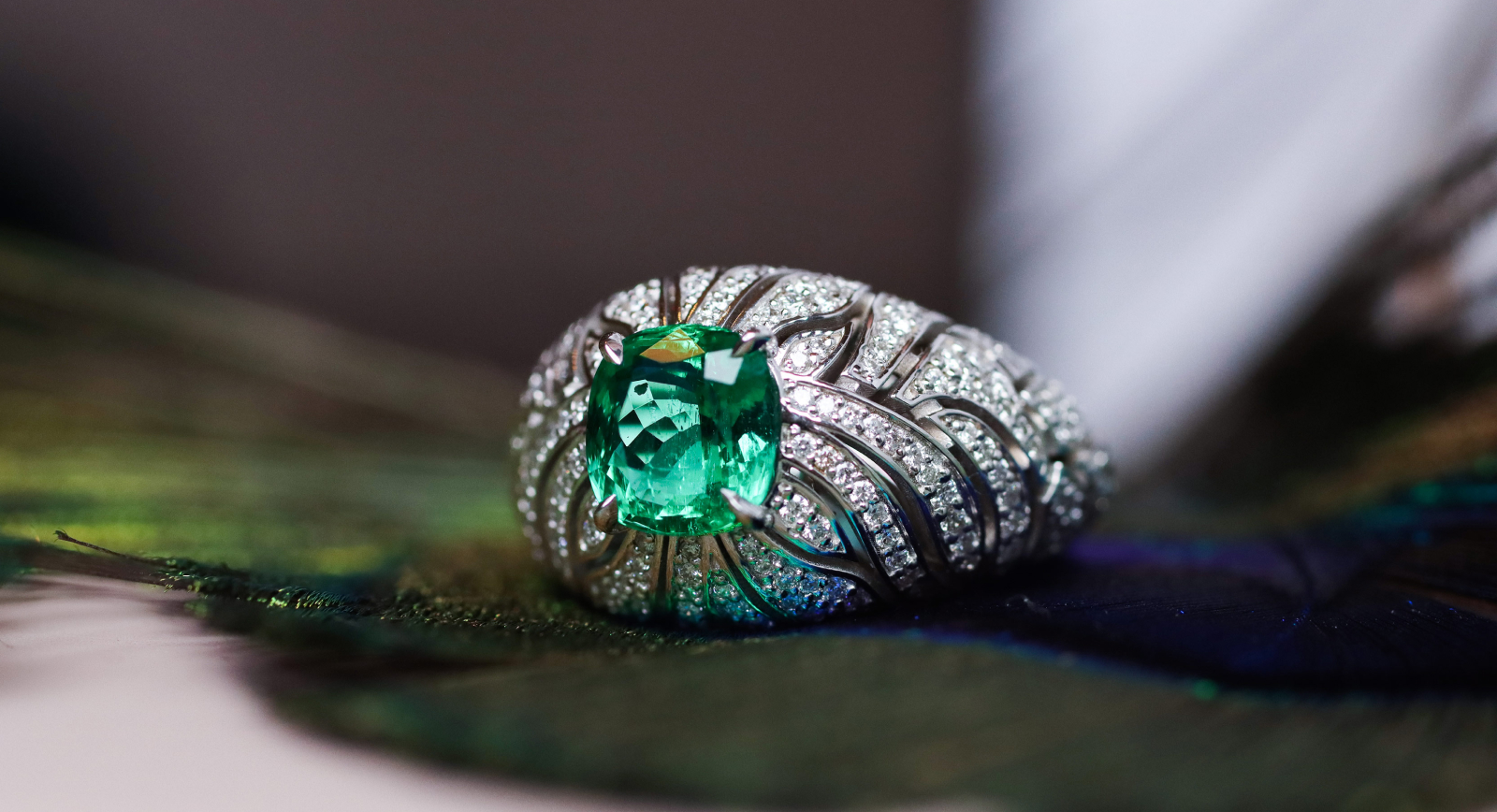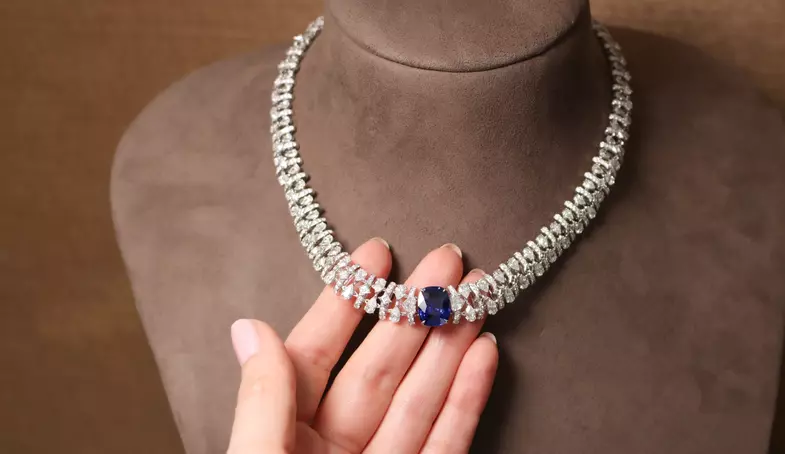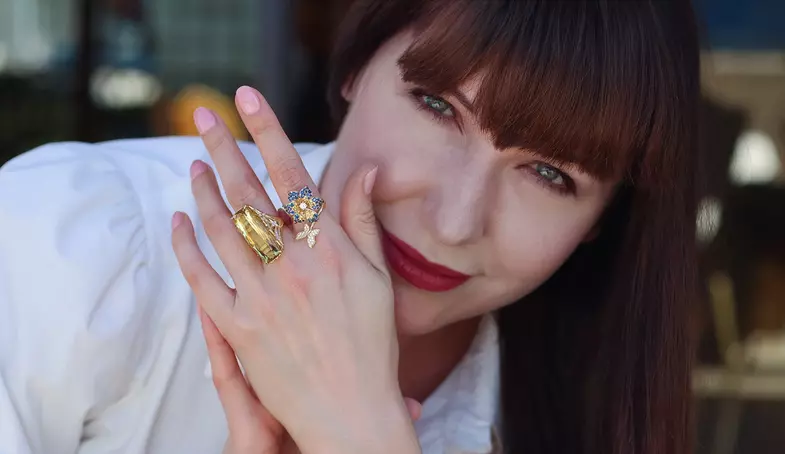Skilled gemmologists often make great fine jewellers because they really appreciate the nuanced qualities of the stones they are working with. There’s something about diving deep into the physical and chemical composition of minerals that makes you want to visit mining sites to see rough crystals extracted in real life, in real-time, and by skilled human hands. I think this is probably the driving force behind Morebelli, which was founded by gemmologists Giuseppe Pocobelli and Aurelien Morette back in 2012.
Today, theirs is a unique jewellery house that “offers a true short circuit” or a streamlined pathway between the mines of Madagascar and the buyer. On its website, you can discover pieces crafted with multi-coloured pastel sapphires, aquamarine, rhodolite, chrysoberyl, emeralds, spessartite, tourmalines and heliodor, so it’s safe to say there’s plenty of choice!
Drawn to the Red Island
When I met Giuseppe and Aurelien at the Gem and Jewellery show in Hong Kong, they told me about their prior experience in the gem and luxury industries before creating their own business. What really sets them apart, at least in my opinion, is their absolute passion for Madagascar, which is sometimes nicknamed the ‘Great Red Island’. Giuseppe started following in his father’s footsteps on the island in 1996 after studying at the Gemological Institute of America, while Aurelien moved to Madagascar in 2004 after a lifetime of gemstone collecting. “I immersed myself with delight in the powdery reality of the trails of the red island and in the exploration of its deposits,” Giuseppe says. They each bring their own experiences to the table, like Giuseppe’s insights into purchasing rough stones and working with Morebelli’s in-house lapidarists. Aurelien learned from the greats, including a Meilleur Ouvrier de France (MOF) award winner, and went on to create the largest manufacturing workshop in Madagascar in 2005. Today, he is responsible for designing the fine jewels that Morebelli sells online and through its boutiques in Madagascar, Ivory Coast and Mauritius.

Gems with a Difference
It is not only Madagascar’s mineral variety that makes it a special locality. Morebelli sources aquamarine, tourmaline, sapphire and other gems from the island but also keeps a close eye out for its special treasures, especially sapphires with unusual colours and rare-colour change properties. “The country’s gemstones often possess unique internal structures and colour zoning, adding to their desirability,” Aurelien tells me. He adds: “Morebelli’s expertise lies in understanding the geological origins of these stones and how to showcase their natural beauty in refined, timeless settings.”
“Each of our stones passes through my hands. They are observed, analysed and evaluated and believe me, some of them have given me serious headaches!” Giuseppe Pocobelli.
However, in the 12 years since the business was founded, things have moved on. High-quality, large gemstones have become “more challenging to source due to increased regulations and a stronger emphasis on sustainable mining practices,” Giuseppe explains. Rather than fighting against this, the Morebelli team has leaned into traceability, ethical sourcing, environmental protection and corporate social responsibility. It has actively strengthened its partnerships with responsible mines and embraced new technologies to improve transparency.

The Morebelli Pillars
In my view, this is what makes Morebelli special: a desire to blend traditional fine jewellery-making techniques with modern ethical considerations and an integrated business model. To communicate its approach to collectors, Morebelli presents its philosophy of ‘three pillars’ – transparency, sustainability and social responsibility. These principles cover a range of important areas, like fair labour standards, ecosystem rehabilitation, suitable wages and recycled materials. Giuseppe says: “By cutting out multiple middlemen, we can maintain quality control from the mine to the showroom. This integration ensures that every gemstone meets strict ethical and aesthetic standards.” And now I know what you are wondering… what are those aesthetic standards? What distinguishes Morebelli jewels from other brands utilising Malagasy gems? Let me tell you!
Classical Interpretation
Morebelli jewellery has a sophisticated, timeless quality that really allows the beauty of each coloured gemstone to shine through. Its pieces often feature bold colour combinations, pairing vivid stones with diamonds and setting them in 18k white or rose gold. Aurelien describes this as “a minimalist yet luxurious approach,” which is characterised by “clean lines, elegant forms and an emphasis on colour and contrast”. Some of its most iconic pieces are statement rings and pendant necklaces, including a cluster-style ring with a 1.35-carat pink tourmaline, 1.10 carats of pink sapphires, and diamonds in 18k rose gold, and a subtly Art Deco pendant with a 1.21-carat emerald surrounded by diamonds.

I especially appreciate the brand’s approach to colour, which is all about finding those special gems with a slightly unexpected and saturated palette. A great example of this is a ring with a 3.03-carat golden sapphire that’s an unbelievably rich honey gold shade and a pendant with a chromatic mix of green tourmalines, tsavorites, emeralds and Paraiba totalling more than four carats. However, one creation that stands out above all is the Bohème High Jewellery necklace, which was crafted to celebrate Morebelli’s 10th anniversary. The piece contains pave-set diamonds and a round-cut rainbow of 1,139 multi-coloured sapphires to highlight the breadth of hues to be found in Madagascar. A more accessible version of this sapphire spectrum can be found in the classic Morebelli tennis bracelet, set in 18k rose gold, with 9.51 carats of corundum hailing from Ilakaka.
On the Horizon
Looking to the future, Morbelli is on a mission to expand its global presence. There’s something quite compelling about curating a jewellery collection in which each piece hails from a different mineral mining location, like Madagascar, Brazil, Tanzania, Myanmar, Australia and so on… surely, this is something all gemmology and jewellery lovers can aspire to?! Giuseppe and Aurelien are planning to open flagship boutiques in key cities across the globe, which is the perfect way to spread the story of ethically and responsibly sourced Malagasy gems worldwide. From what I have seen so far, I will be watching their journey closely from here on out.




























